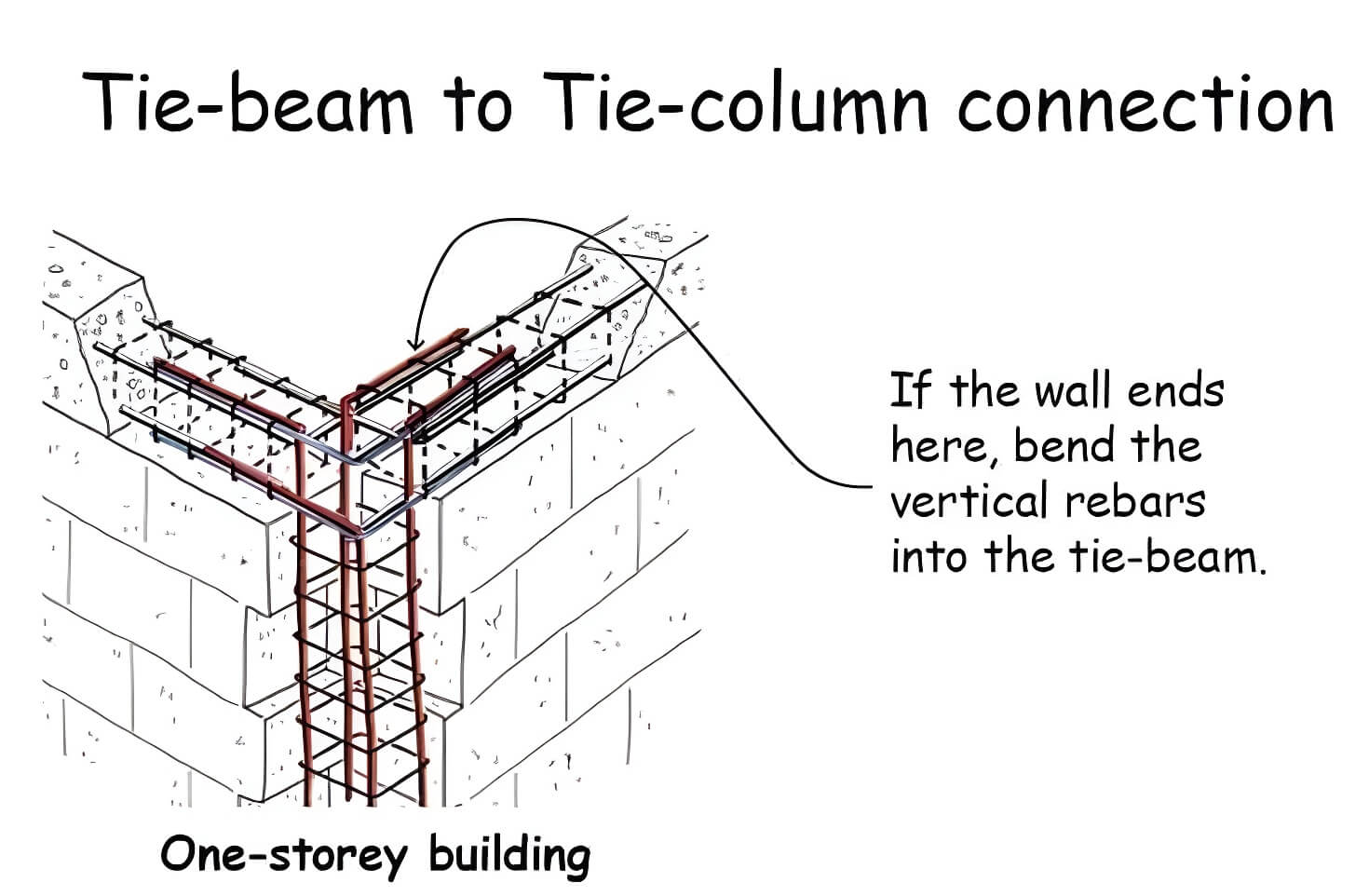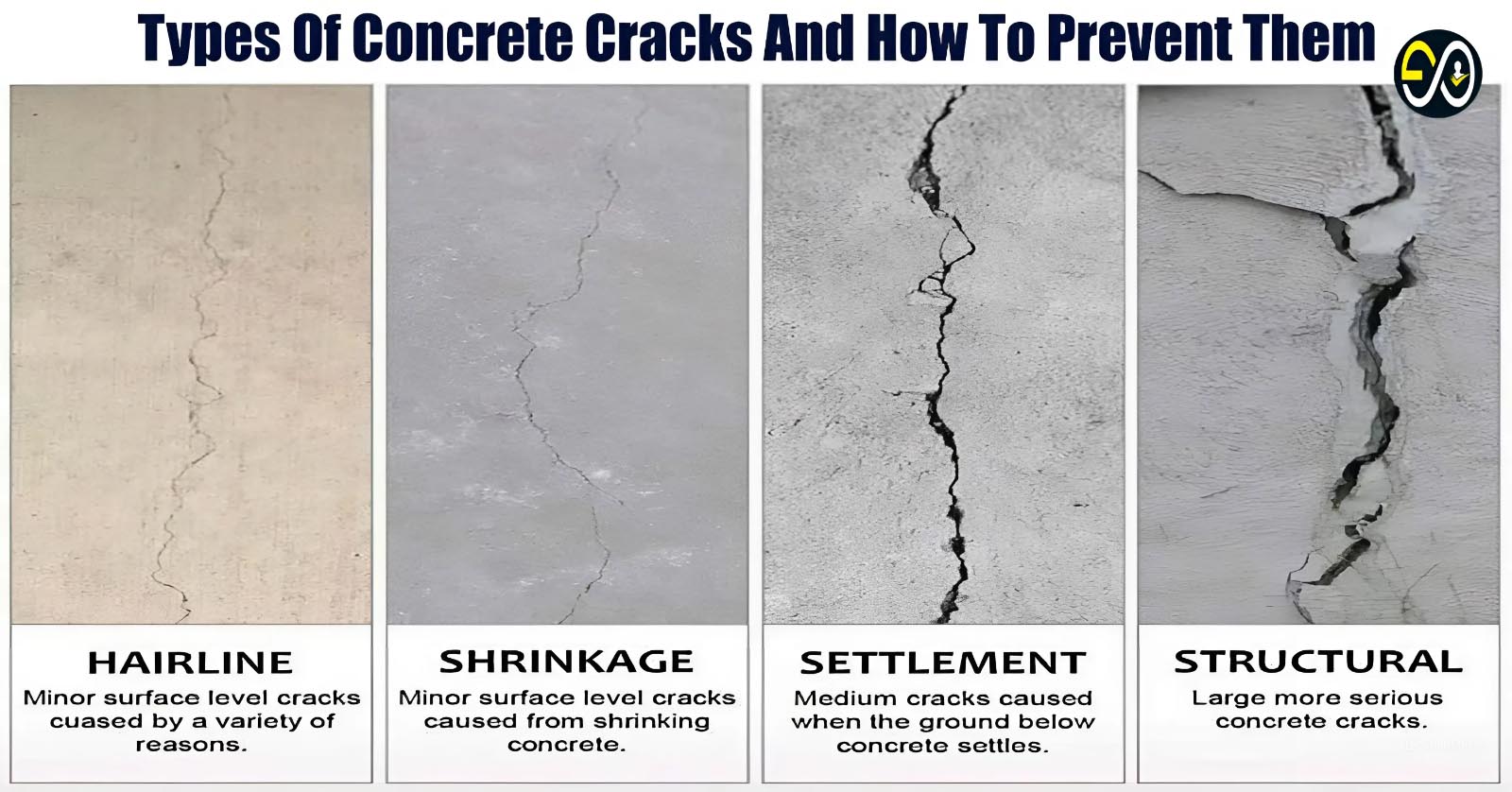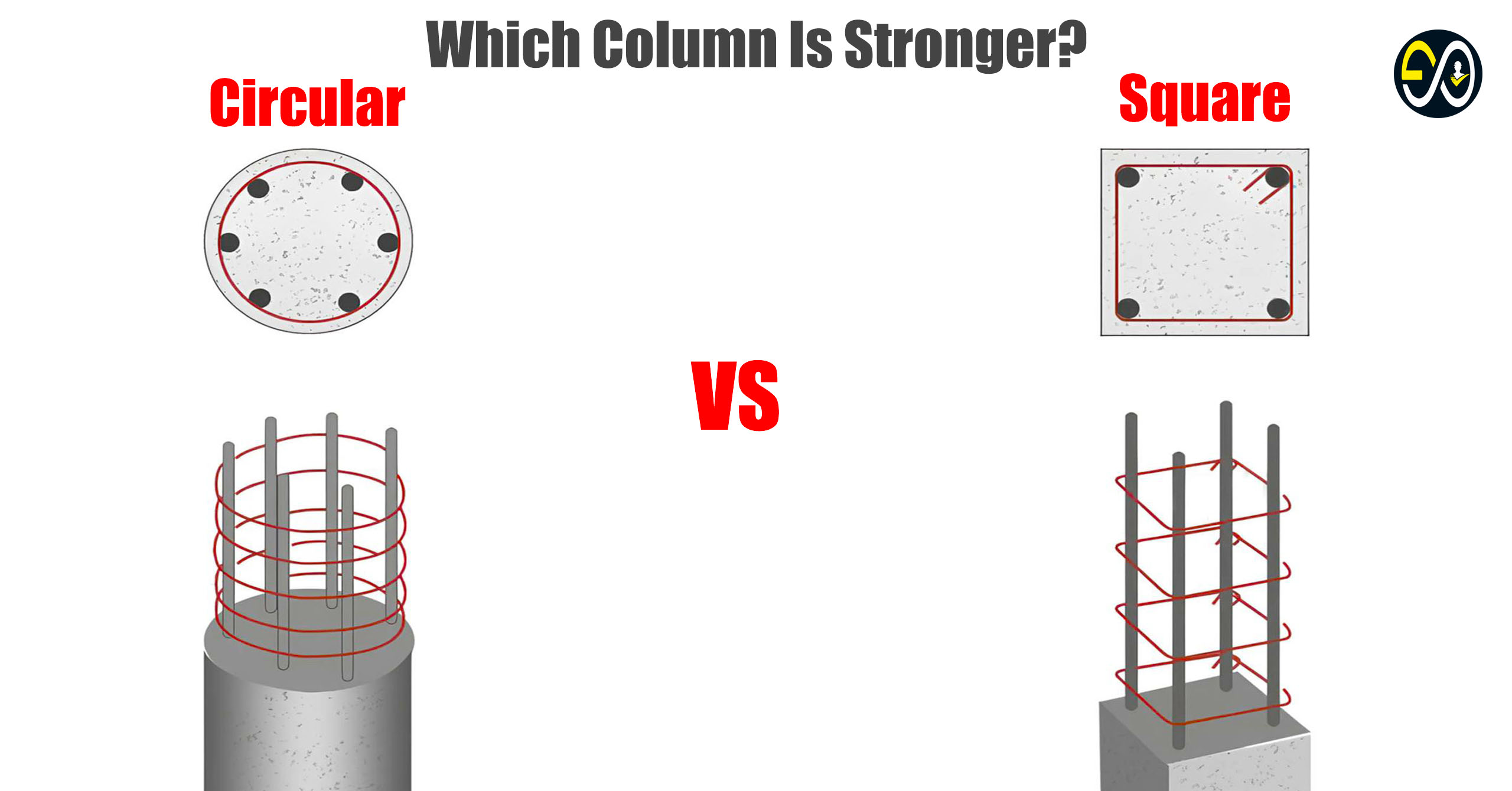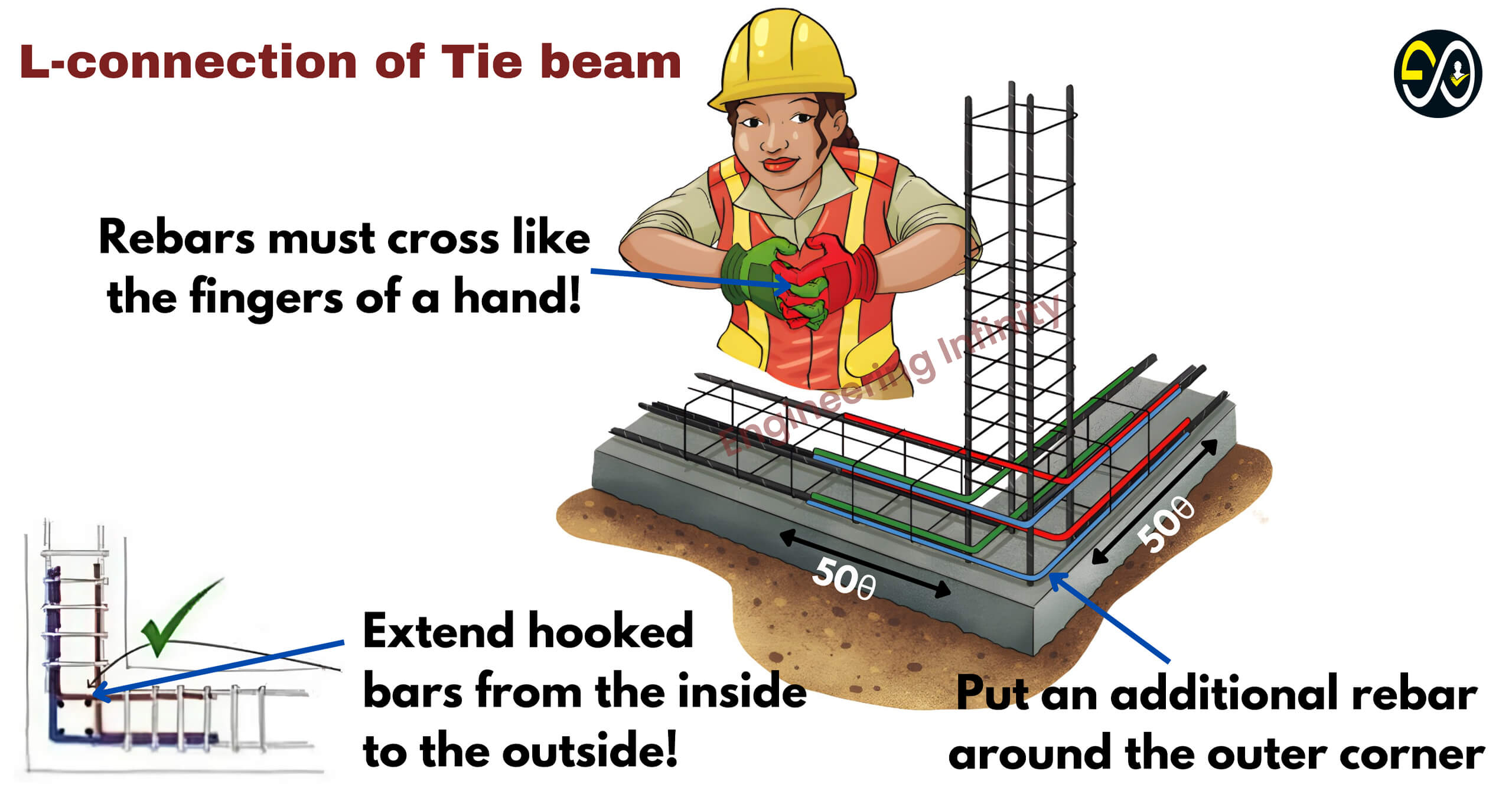
Understanding the Importance of Proper Tie Beam Reinforcement
In structural engineering, the tie beam plays a critical role in ensuring the stability of a structure. Its primary function is to connect columns and distribute loads across the structure. However, properly reinforcing tie beams is crucial to avoid structural failures, particularly in areas prone to seismic activity. A common and effective reinforcement method is to ensure that rebars cross like the fingers of a hand. This method strengthens the connection between the tie beams and columns, ensuring the structure can withstand external forces.
Table of Contents
Rebars Must Cross Like the Fingers of a Hand
When discussing reinforcement in tie beams, one of the most critical techniques is ensuring that the rebars cross. This crossing action, akin to the fingers of a hand, provides multiple benefits:
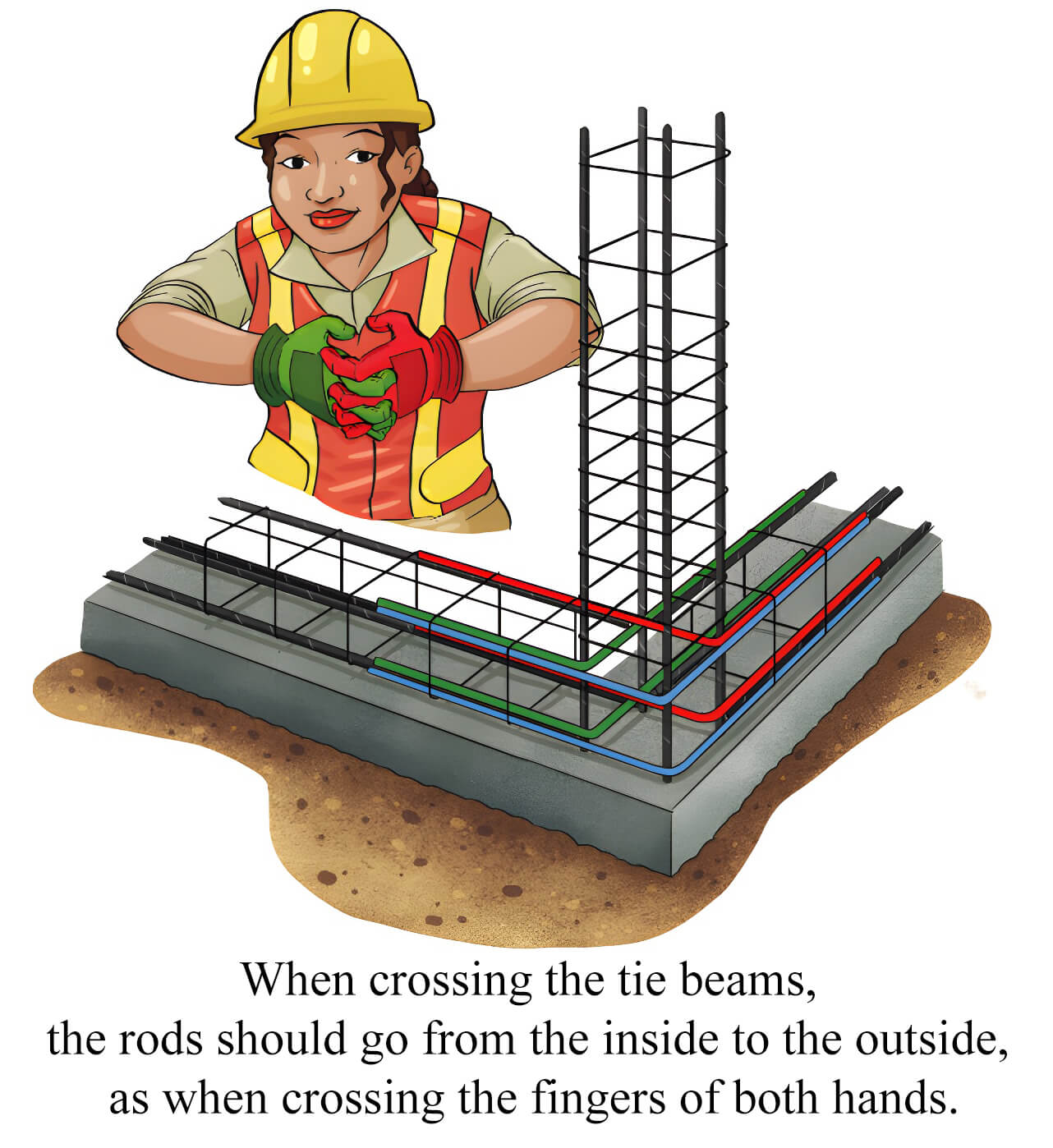
- Enhanced Load Distribution: Crossing rebars ensure that loads are distributed more evenly across the structure. This is particularly important in the event of an earthquake, where the stress on the structure can be uneven and dynamic.
- Increased Structural Integrity: Crossing the rebars makes the connection between the beams and columns more rigid, reducing the likelihood of structural failures.
- Preventing Displacement: In structures subjected to lateral forces, such as wind or seismic activity, crossed rebars help prevent displacement and maintain the overall stability of the building.
Additional Rebar Around the Outer Corner
One of the most vulnerable areas in a tie beam connection is the outer corner. This area is subjected to significant stress, particularly during seismic events or other external forces. To combat this, additional rebar should be placed around the outer corner, following a rule of 50 times the diameter of the bar.
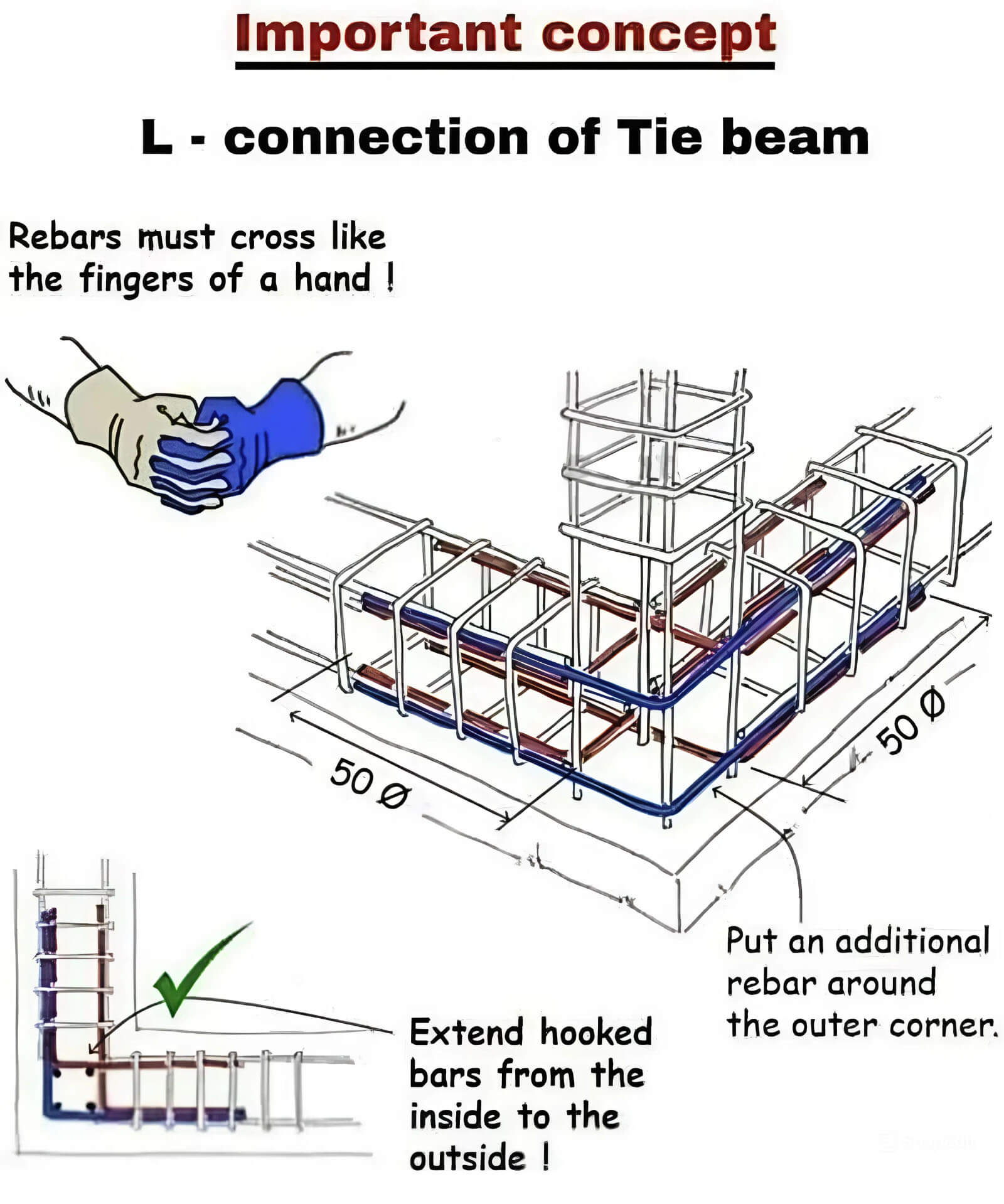
For instance, if a rebar has a diameter of 16mm, the additional rebar should extend at least 800mm around the corner. This additional reinforcement acts as a buffer, absorbing and distributing the stress, thus reducing the risk of cracking or structural failure in this critical area.
Extending Hooked Bars from Inside to Outside
To further enhance the strength of the tie beam connection, hooked bars should be extended from the inside of the beam to the outside. This technique provides several advantages:
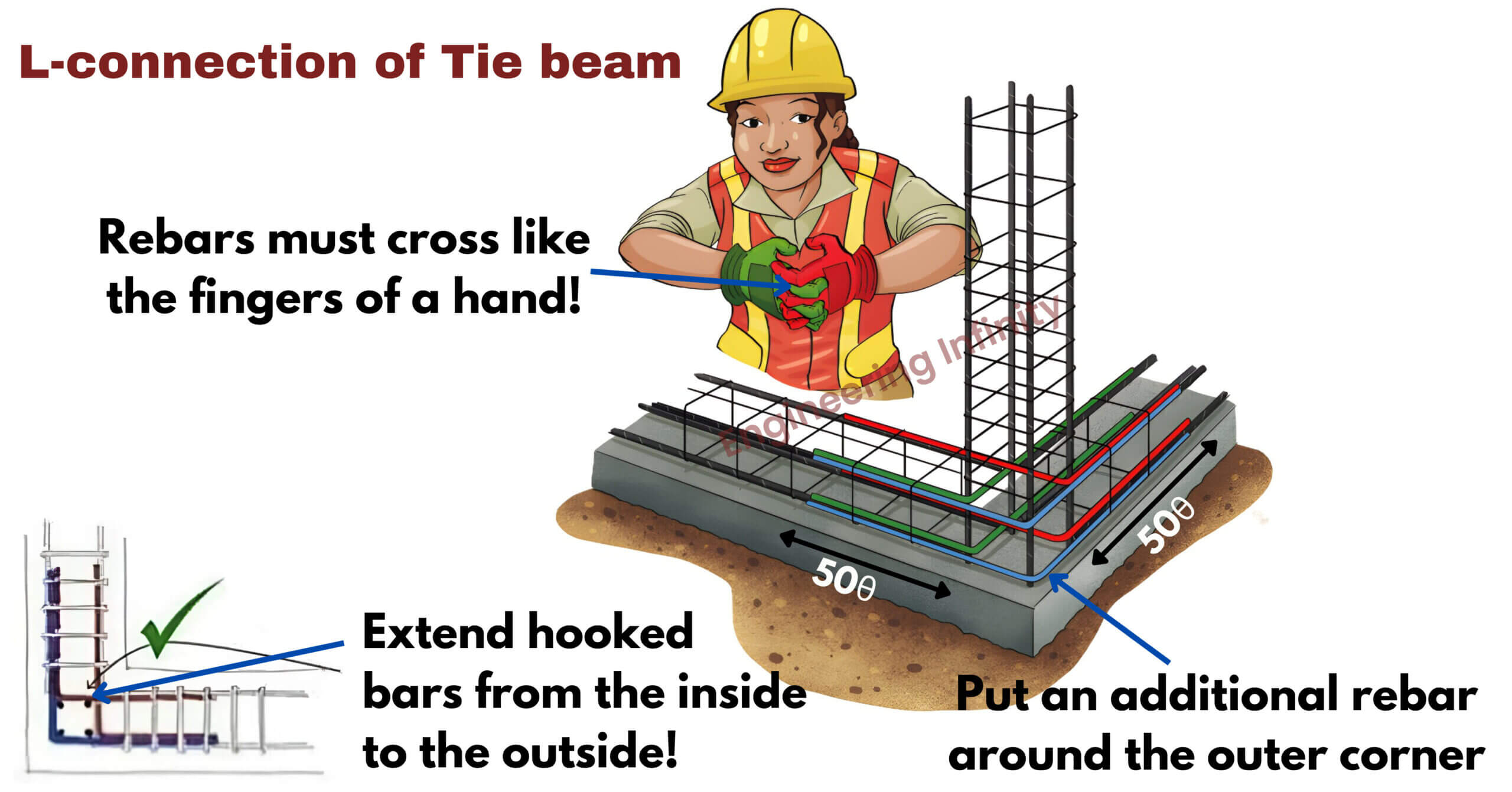
- Increased Anchorage: Hooked bars offer better anchorage within the concrete, ensuring that the rebars remain firmly in place even under significant stress.
- Enhanced Crack Resistance: By extending the bars from the inside to the outside, the chances of cracks developing in the concrete are significantly reduced. This is particularly important in areas where the structure may be subjected to heavy loads or seismic forces.
- Improved Durability: Extending hooked bars improves the overall durability of the structure by ensuring that the connection remains strong over time, even in harsh environmental conditions.
